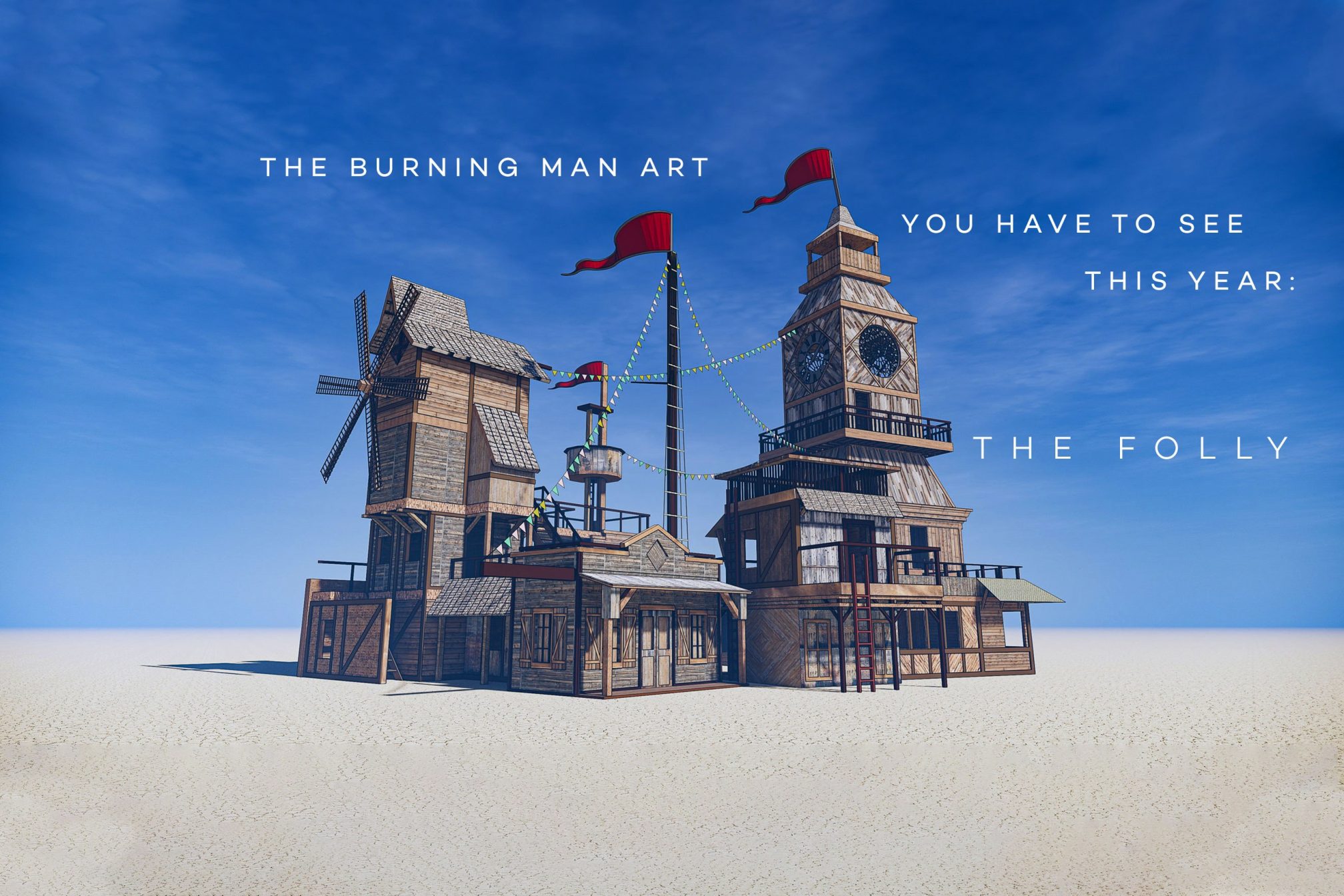 Culture
Culture
The Burning Man art you have to see this year: The Folly
Project-lead Dave Keane shares a few cents on this rogue offering
This feature is the first of a three part series, detailing the ethos and effort behind a few theme-driven art installations set to appear at Burning Man 2019.
~ ~ ~
Much of Burning Man's allure centers around the sound camps and art cars, coupled with a quirky vernacular all its own. However, the soul of Black Rock City has always resided within the structures, the artists and the builders.
In 1990, when the event moved from Baker Beach to the high-desert of Nevada, known as Black Rock Desert or simply "the playa", this vast landscape quickly became a canvas for a rag-tag troupe of brilliant nerds to flex their engineering ingenuity. They came to explore the furthest reaches of pure creation with absolute freedom, to test the boundaries of human resilience, to reimagine a model for communal connection, and to celebrate this sliver of time we all share with shenanigans and pyrotechnics.
Today, the Burning Man Organization builds three main structures: Center Camp, The Man, and The Temple. Most everything else - all of the art, the camps and the performances - are manifested by the citizens themselves, by Burners, who put years of their lives into these tangible notions of radical self expression and cultural commentary.
This desert becomes a city built by the people, for the people, and when the event is in full swing, there’s nothing like it on Earth.
Aside from the scorching conditions found in the dusty, alkaline-expanse of Black Rock City, the logistical, structural and psychological challenges behind creating large-scale art on playa are frankly unparalleled. Not to mention the slim budgets and exorbitant bodily hours required to conceptualize and assemble a fruitful offering. Now bring all these conditions to a desert environment that’s literally trying to kill you - and a curious petri dish of strange sentiments and elaborate offerings begins to reveal itself.
Burning Man art installations arise from a realm of creativity reserved for the uniquely talented and wildly ambitious. It’s also well-suited for the mildly insane. Burners head into the desert each year to not only burn the Man, but to burn themselves with intentional abandon.
Many of the projects to debut at the 2019 event have been year-long endeavors, to thrive in completion for barely one week, before being reduced to fire and ash. It’s a cathartic cycle, and few are able to pull off the mental and physical gymnastics necessary for a successful project. The select few that create on the Playa have one common thread: tenacity, and love of a challenge.
The Folly
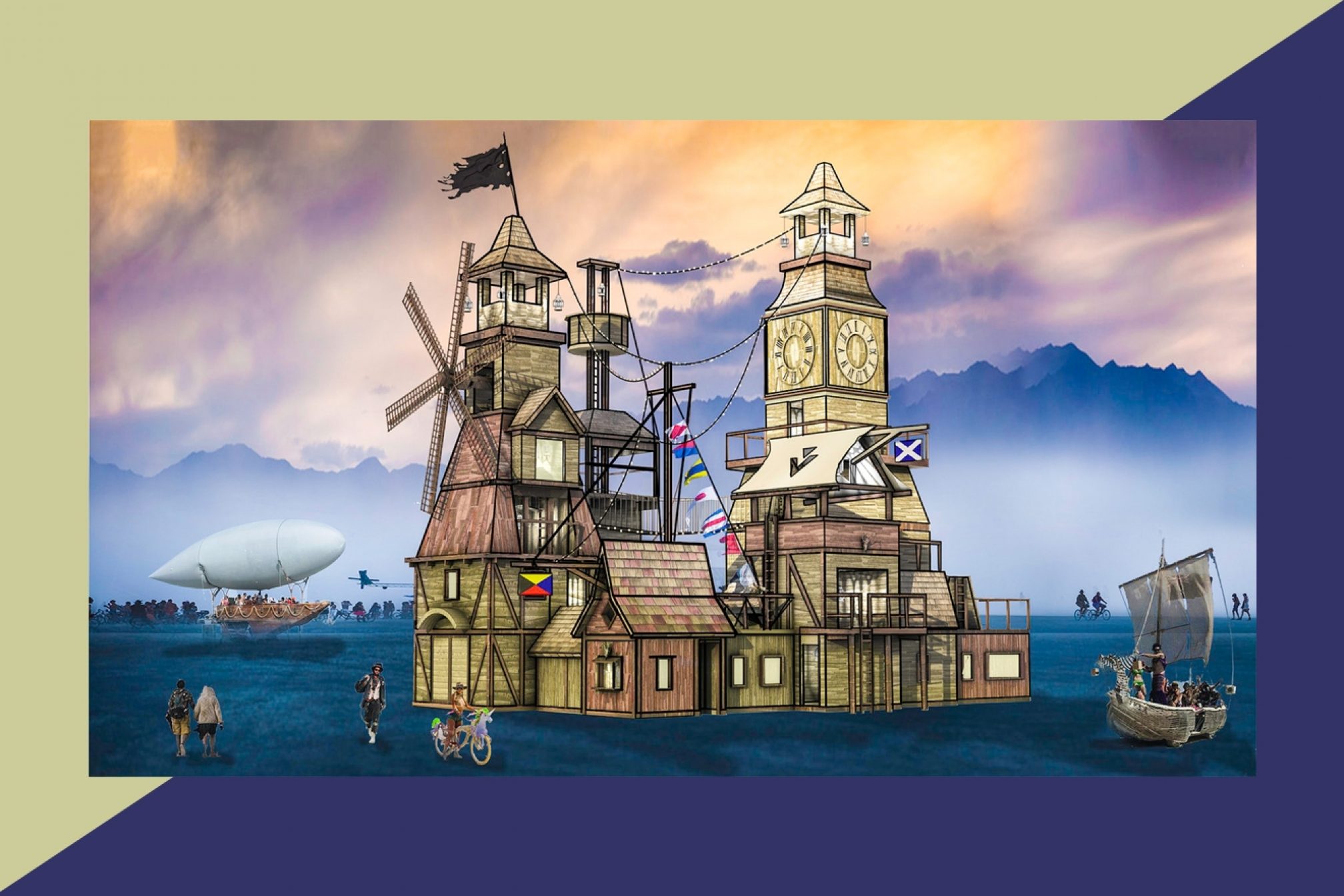
The Folly is one of the most ambitious installations to ever appear on the Playa - not only in scale, offering and design, but especially in ethos.
Dave Keane is the visionary behind The Folly, and a True Blue veteran of BRC. He’s been burning for over two decades, after narrowly sneaking into his first event in the late 1990s. The experience radically changed his life trajectory, and over the past 10 years Keane has become one of the more prolific builders to create big art on the playa. He’s been a lead carpenter with many of the more iconic installations to appear at Burning Man: from the BRC Lighthouse Service to the Totem of Confessions, along with an impressive run of Temple builds, including 2010, 2013, 2015, 2017 and 2018.
After these experiences, being a chief contributor on plentiful projects, Keane found a community of exceptionally capable builders, engineers, fabricators, and design artists who are as excited as he is launch this new project. The Folly is Keane’s first brainchild, and with the project he aims to do something different.
Emerging from the barren lake bed of Black Rock, The Folly presents a massive, antiquated Irish fishing village in the vast expanse of Deep Playa. This micro-township is flush with secret passageways, winding tunnels, hidden rooms, ladders and cargo nets; all meant to be climbed and explored. The entire structure utilizes an estimated 200,000 pounds of lumber to create 24 unique rooms, a crow’s nest, clock tower and 70-foot windmill spire.
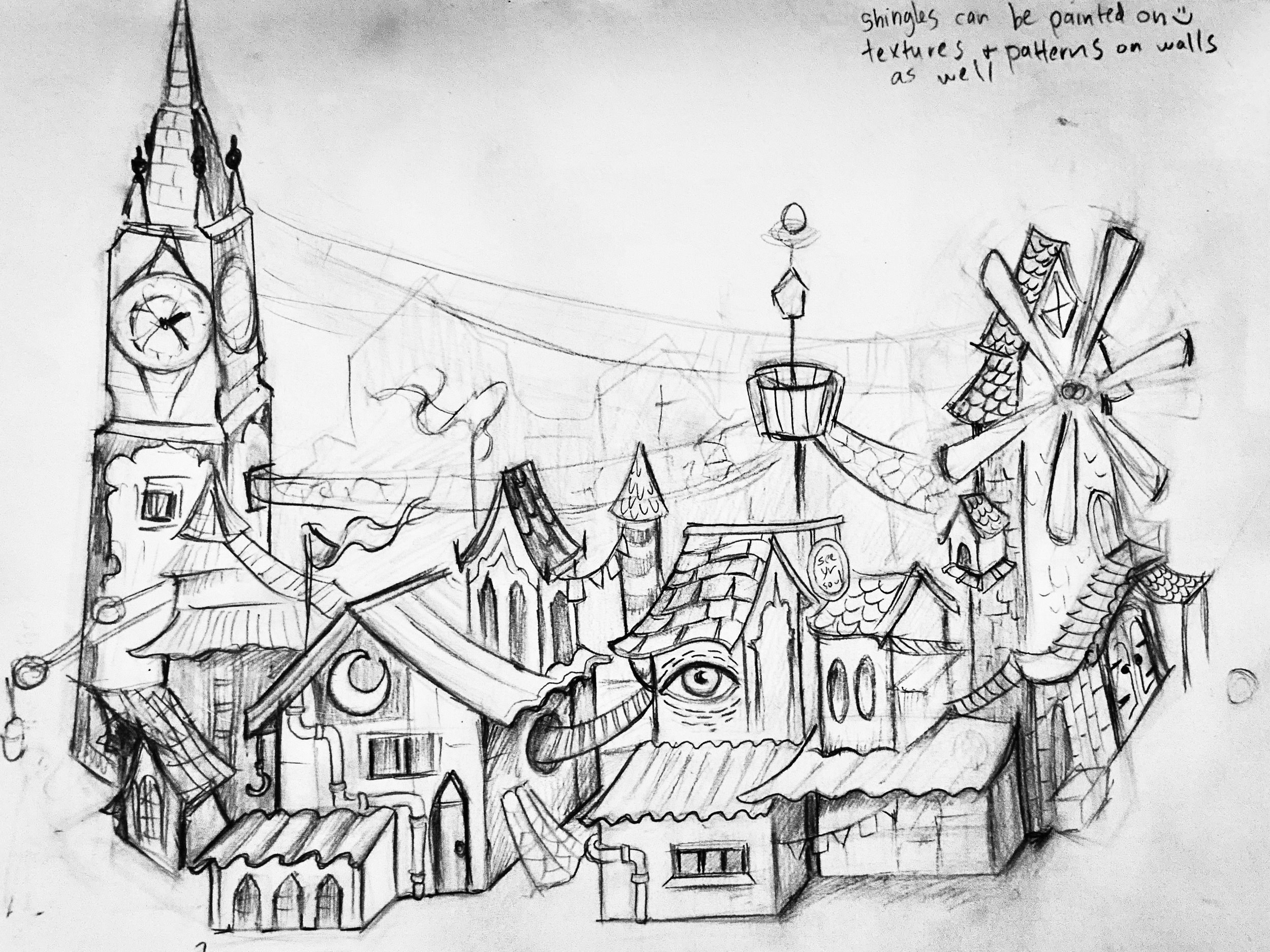
These structures encompass a central courtyard, where a full schedule of music, events and performances will be held, along with pop-up food and bar offerings. Only a few of the exterior passageways will lead to the courtyard, making the installation equal parts artistic, performative and labyrinthian.
Poetry readings, interpretive dance ensembles, late-night Irish folk jams, and a few sneaky dance parties will all take over the courtyard throughout the event. One of the larger functions at The Folly will feature the return of the Black Rock City Philharmonic, after their debut in 2018. Their performance is tentatively scheduled sometime during early-Burn Week, and if last year was any indication, this will be a spine-tingling performance.
Despite this already monumental offering, what’s particularly pioneering about The Folly is that recycled or repurposed building materials make up the majority of the infrastructure. This project strives to bring a heightened intention of sustainability to large-scale art in Black Rock City, serving as a proof of concept for future installations - asserting that used materials are viable options for installations, both on playa and beyond.
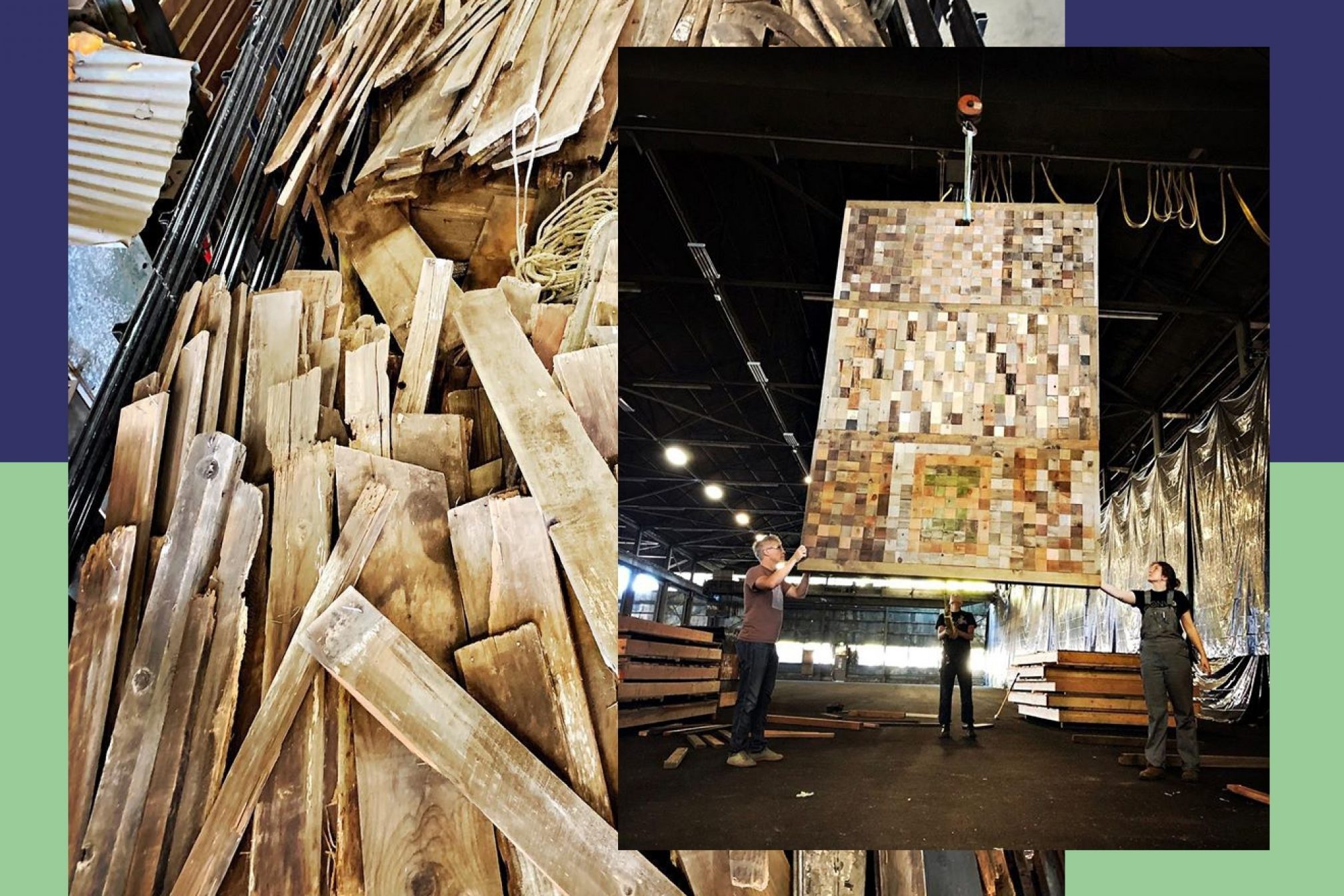
“Sustainable sourcing is a key tenet of the Folly. Waste in the construction industry is shocking... so making use of something that would have otherwise ended up in a dumpster is definitely the main motivation,” Keane explains.
In the Default World, Keane is a skilled contractor working in the Bay Area, who found himself appalled by the unsustainable and wasteful nature of development projects. He's also keen to make good use of it. “The reclaimed aesthetic lends itself to the playa pretty well. It does look good out there. But we’ve saved close to $20,000 on lumber, just by using recycled stuff from construction sites. Probably 60 per cent of our total build materials have all been reclaimed. Obviously, with the structural elements of the towers we used new lumber, but probably 99 per cent of the single story structures are entirely reclaimed materials.”
A decent portion of the build materials also came from marijuana grow-room operations. Keane described the affair in a boisterous manner, saying, “An old friend had finished a grow and said we could scrap their operation. So we had our guys in these rooms, at 11pm on a Tuesday night, in the dark with headlamps on, ripping up all this plywood. We absolutely went to town with it.”
In addition to capitalizing on the excesses of the construction and marijuana industries, Keane issued an all-call to the Bay Area’s scrap junkies, asking them to donate any and all building materials they may have to offer. And boy-oh-boy, did they deliver.
Since late-2018, he regularly arrived to his massive space at Oakland’s fabled American Steel to discover generous deposits of all sorts. “A lot of people have donated stuff, probably well over 100 folks. We’d show up at the shop and find massive piles of old fencing, vintage clocks and tables… People really stepped up to the plate. I’m continually amazed that so many people would drive for hours to bring us free stuff. It’s been wonderful and so heartwarming, witnessing how much support we received from contributors that are down with the whole reclaimed thing.”
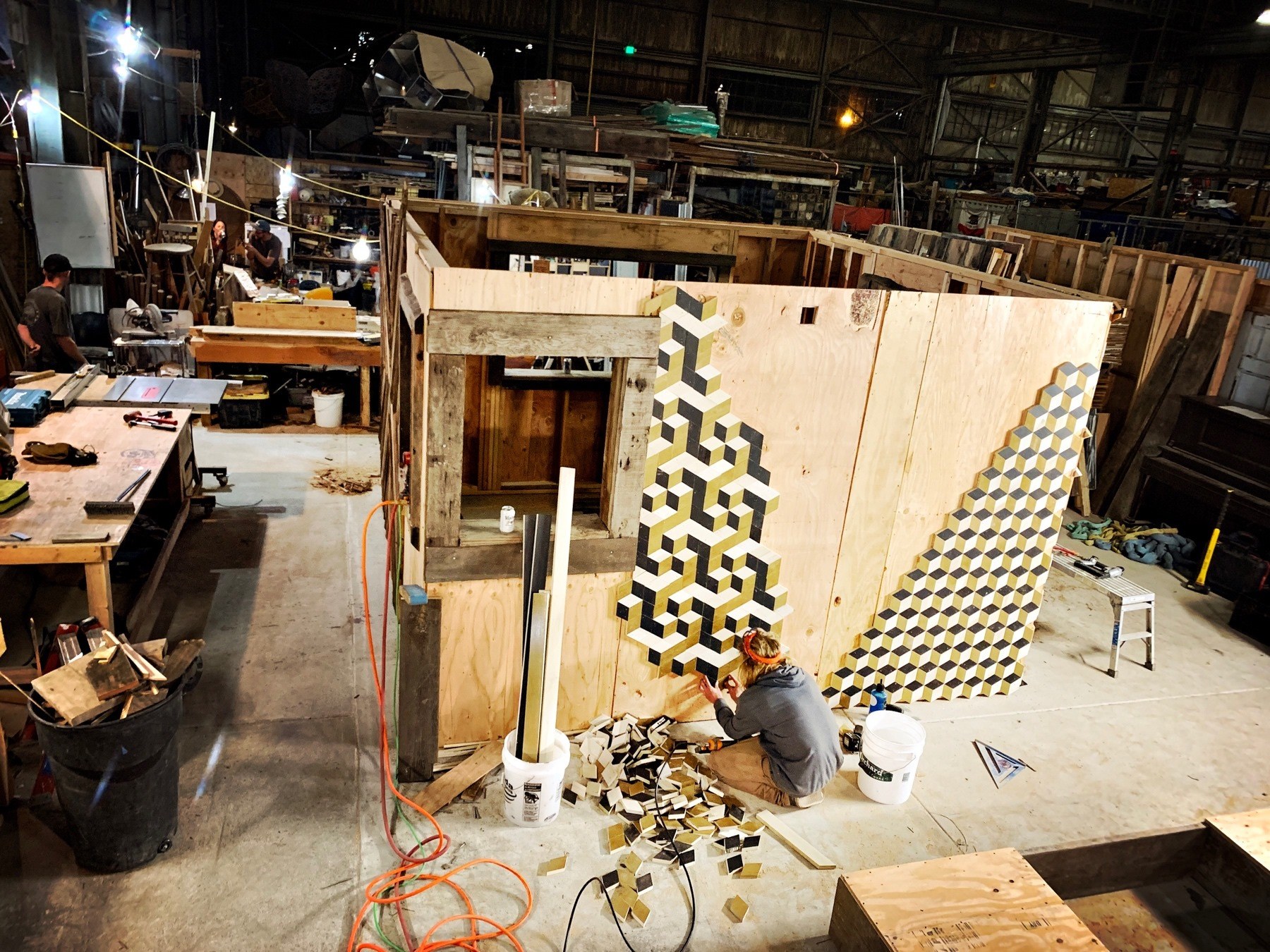
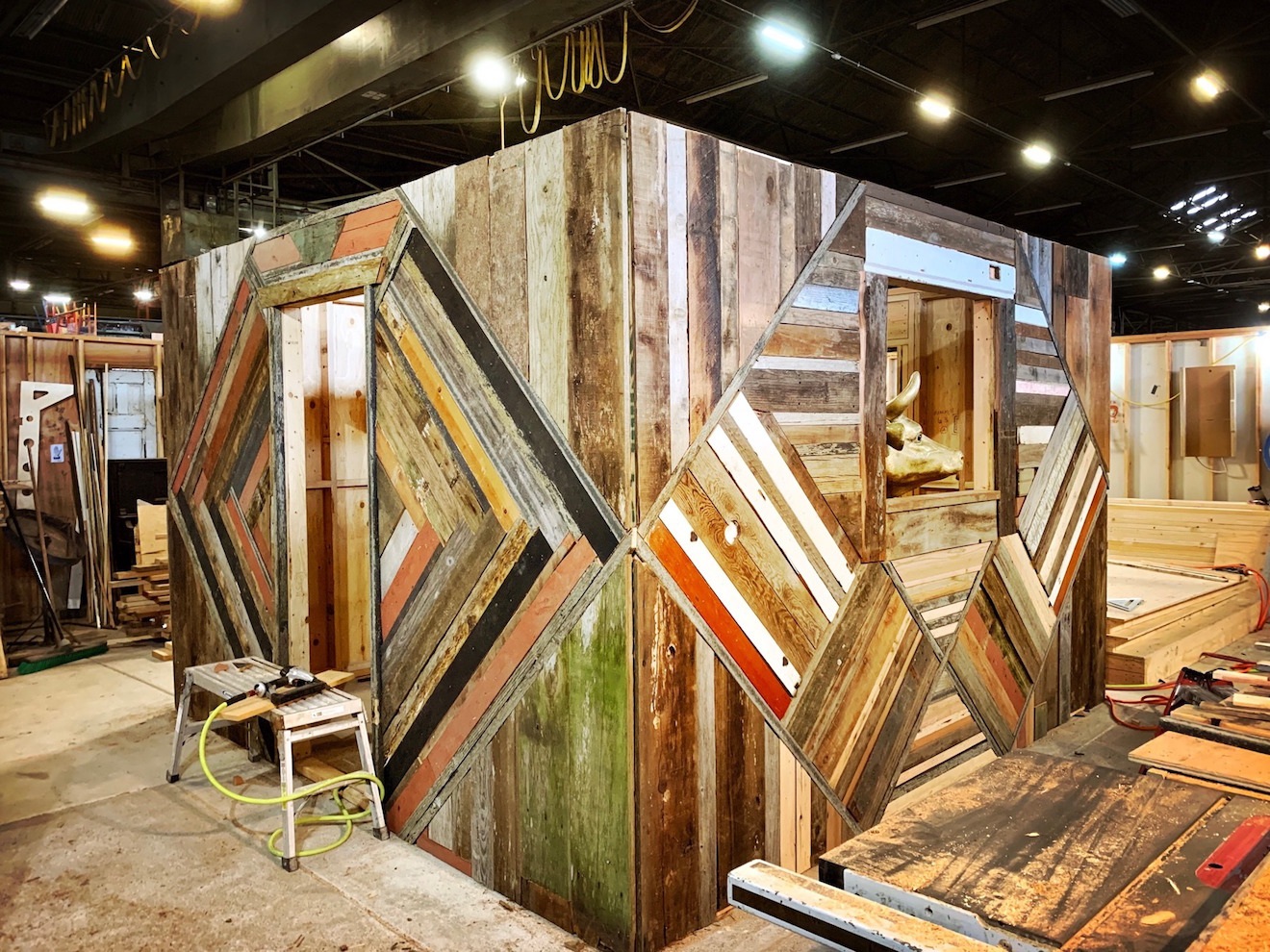
Many of these donations have become wall panelling in the form of intricate, geometric patterns, reflecting a delicate sensibility toward detailed decor and aesthetics. “We started getting a ton of old redwood and siding boards,” Keane said. “It informed the aesthetic we were going for, and we started experimenting with different geometric shapes - transforming old wood into something completely different and beautiful.” These touches make for a well-rounded compliment to the gargantuan size of The Folly, which spans 50-feet wide by 80-feet long.
Making large-scale art more sustainable is a central tenet of The Folly’s mission, and having already completed most of their fabrication, the proof of concept is imminent. Despite being such a massive undertaking, The Folly was mostly completed last month in Oakland. It’s currently flat-packed and sitting pretty in Reno, before heading to the playa on August 9 to be fully erected and polished.
The success of this uncharacteristically expedited timeline speaks to the efficiency, foresight and playfulness of both Keane and his team. “Our design is relatively simple and I’ve got an epic crack team of builders that have worked on a lot of projects out there. The crew is lean - only about 20 builders have worked on the installation so far. We’ve been through the pit-falls and seen what doesn’t work,” Keane said. “Our team has been working seven nights a week for months, and the key is that we’ve definitely cultivated a culture of fun in the shop. You want people to want to come to work at night, after they’ve worked all day long. We’ve got all the best Burning Man builders on The Folly this year, unfortunately to the detriment of a lot of other projects.”
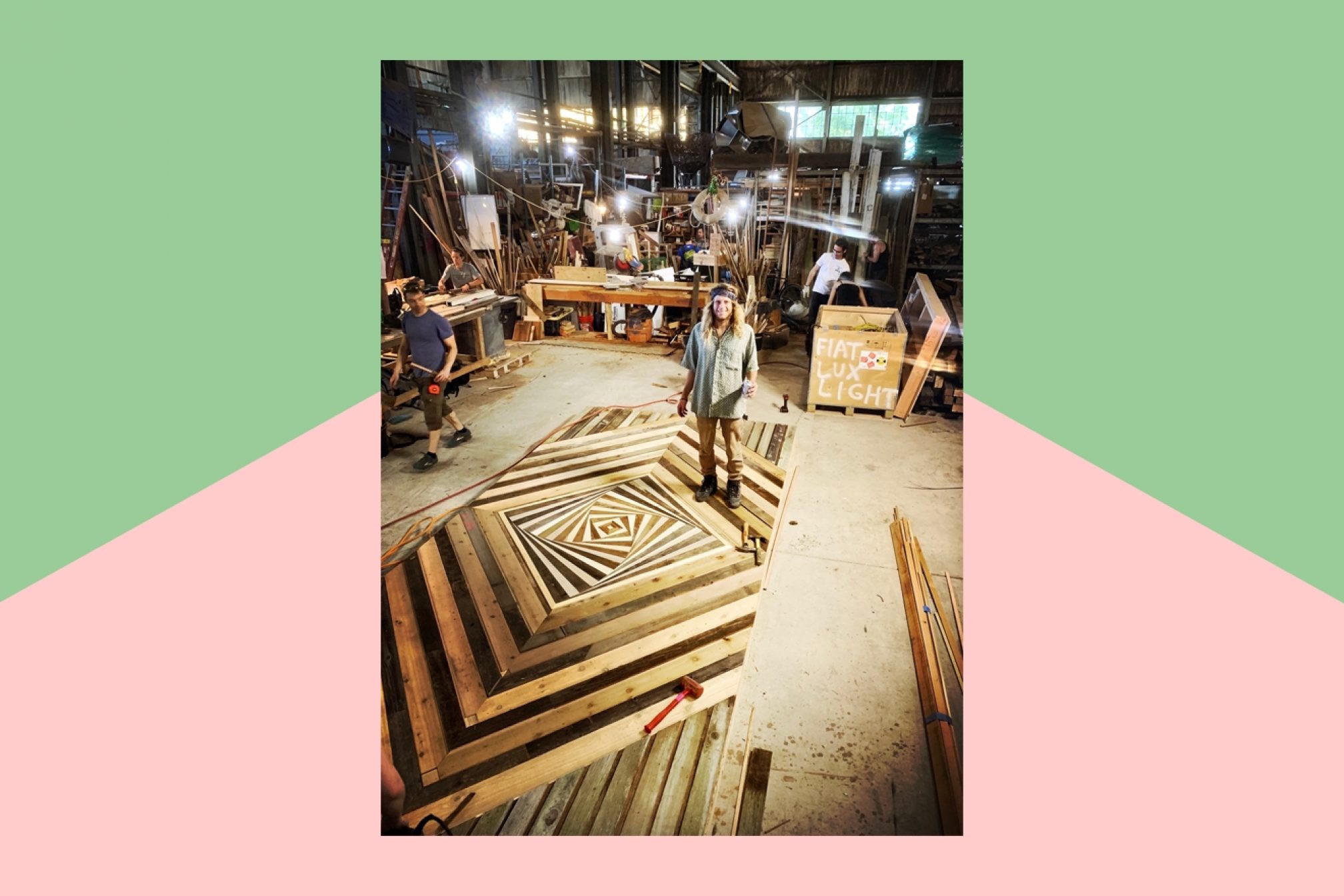
Surprisingly, the most challenging aspect of The Folly hasn’t been the design, construction, transportation logistics or the sourcing of sustainable materials - it’s been fundraising.
While Keane’s project received a generous Honorarium Art Grant from the Burning Man Organization, it still only covers a modest portion of their purchasing pie. “Fundraising is the toughest thing. The sheer amount of time you need to spend getting money is a thing unto itself. We got a good Honorarium grant and received a number of generous chunks of change from donors, as well as a ton of smaller donations, but we realistically need another $50,000 to pull this off,” Keane shared. “We don’t have a professional fundraiser. So we’ve been doing it ourselves and I’m confident we’ll get there. It’s been a grassrootsy kind of thing.”
In reflecting on what The Folly has meant to Keane over the past year, and now seeing it on the verge of completion, he’s particularly sentimental about this project - and rightly so. “You know… I’ve talked to my dad a lot over the years about Burning Man, and the waste has been one of his main hesitations. That has always stuck in my head when I’m on these big projects and we spend a fortune on wood. It always left a bad taste in my mouth. So it feels good to look people in the eye and say, ‘Yeah, we’re using reclaimed lumber here!’ Spending $100,000 on lumber alone doesn’t sit well with a lot of people. Especially now, and the optics are only getting worse. So it’s nice to take it in a different direction, and I hope other people follow suit after seeing it can be done.”
Donations to The Folly can be made here.
Ryan Baesemann is an Editorial Contributor to Mixmag. Follow him on Twitter.
All photos via The Folly.
Read this next!
Meet the sound camps of Burning Man
The best ways to keep your Burning Man fashion eco-friendly
The Burning Man dictionary: Playa vernacular that you need to know
Get the best of Mixmag direct to your Facebook DMs


